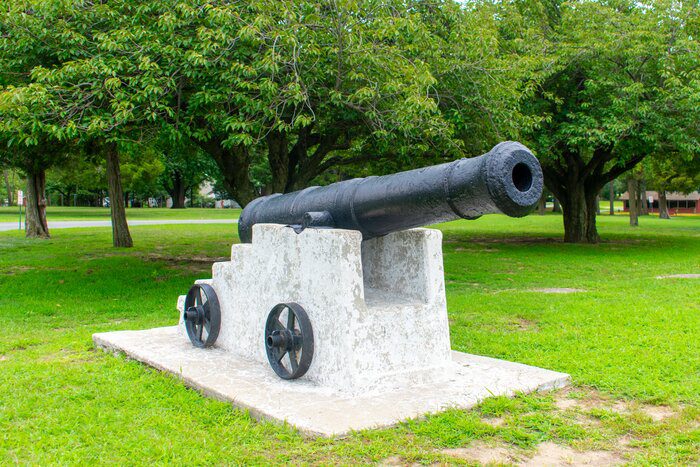America’s first capital after gaining independence was actually Philadelphia, Pennsylvania. However, during the Revolutionary War, the opposing forces didn’t give the location up without a fight. One of the most instrumental battles for control of the city was The Battle of Red Bank; this location, Red Bank Battlefield, is the subject of our latest Jersey Through History.
The Continental Army abandoned Philadelphia following the Battle of Brandywine Creek in September, 1777. Though the British had tight control of the city, they lacked access to the Delaware River; as such, supplies were unable to reach them. Further adding to their difficulty, rebels set up defensive obstacles to prevent ships from passing through the river.
More from Best of NJ
Fortifying Fort Mercer
Meanwhile, Fort Mercer on Red Bank Battlefield was an “earthen fort,” consisting mostly of banks, ditches, and defensive obstacles. Likewise, the fort held over a dozen cannons and could accommodate about 1,500 men at one time. They constructed the fort on a plantation belonging to James and Ann Whitall, wealthy Quakers settling along the Delaware. Congress seized a portion of their property for the war effort, measuring about 350 yards long and 100 yards wide. However, rebels eventually took over the plantation in nearly every aspect. For instance, rebels even chopped their apple orchard down to supply stakes for the Battle of Red Bank.
In October 1777, the British successfully broke down rebel defenses along the Delaware, allowing war vessels to reach Fort Mercer. Amassing a large force numbering in the thousands – with aid from Hessian forces – the British attacked Fort Mercer. At the time, the rebels had about 600 men stationed at the Fort. Attacking from two sides, the British first came from the south, only to be met by cannon and musket fire; forcing their retreat. On the British side, the attack was led by General Howe.

The Battle of Red Bank
Meanwhile, the Hessian forces moved on the north side of Fort Mercer, but struggled with the defensive obstacles. They were soon spotted and dispatched by rebels, forcing another retreat, but not before losing roughly 400 men. The battle didn’t end there, though, as several British ships soon traveled up the Delaware. Rebels were able to force two of the ships – the His Majesty’s Ship (HMS) Augusta and HMS Merlin, aground. By the next morning, the HMS Augusta caught fire and exploded. (The largest vessel lost by the British during the Revolutionary War.) The crew of the HMS Merlin abandoned and destroyed their ship shortly thereafter.
The victory at Red Bank Battlefield in October was short-lived, as the Continental Army soon lost Fort Mercer; a month later, the area was under British Control. Despite this, the rebels continued to have a strong presence in the area; forcing General Howe to retreat back to Philadelphia for the winter.

Red Bank Battlefield Today
Red Bank Battlefield Park is open to the public all year round from sunrise to sunset. The park mostly offers tours to schools, summer camps, and senior community centers; however, the grounds are open for self-guided tours. Informational plaques provide visitors a glimpse into the Battle of Red Bank and 18th century living in the area. Likewise, experts are frequently available on-site to discuss early American life and Revolutionary history with visitors.
Meanwhile, the James and Ann Whitall House is open between 1:00 pm and 4:00 pm, Thursday through Sunday. Guests can visit the historical home as well as the historic gardens; the latter is where Gloucester County Certified Gardeners cultivate vegetables, culinary herbs, and medicinal herbs. Volunteers also dye and cut flowers that are historically representative of the eighteenth century. The gardens are open to the public during the same hours as the park.

Gloucester County currently maintains Red Bank Battlefield Park in National Park. It offers battlefield and museum tours as well as monthly educational programs. The expansive park along the river also holds a couple pavilions ideal for parties and gatherings. Visitors are also welcome to enjoy the benches and picnic tables; or simply relax on the greens and steep in the history of Red Bank Battlefield.
Click Here For More Jersey Through History Stories.
All Photos: © Patrick Lombardi / Best of NJ













